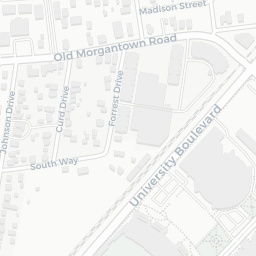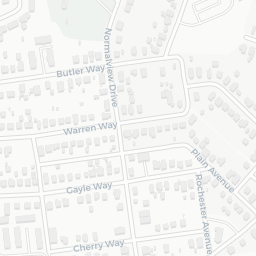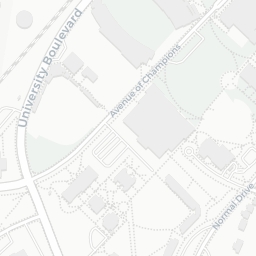Military Science and Leadership
STX Training Tips
Tips for Conducting a STX Lane from an evaluators point of view
ENSURE YOU ARE CLEARLY IN CHARGE FROM THE TIME YOU OCCUPY THE ASSEMBLY AREA UNTIL YOU HEAR THE EVALUATOR SAY "CHANGE OF MISSION".
STX LANES are 90 minutes long, 2 minutes to receive the mission, 23 minutes for TLP (troop leading procedures), 40 minutes to conduct the movement and actions on the OBJ, 10 minutes to consolidate and report, 10 minutes for the AAR, and 5 minutes for movement from AAR to the next lane.
1. The most important item that effects each cadet in the squad is the squads SOP. The squad that you are with at camp must be on the same sheet of music (ie., having only one SOP that is common to all in the squad) There are many different styles of SOPs and all will work. One style of a SOP that works very well, is the number system (numbering each position 1-? with duties and special teams.) This type of SOP also helps with a quick change of positions when the new squad leader and team leaders our ID'd. It also works well during the OPORD with tasking subordinates ( the squad leader will be able to ID quickly individual cadets with key tasks with little confusion).
2. Time starts right after you're asked if you have any questions. Ask smart questions, ensure you are focused on the mission. The first thing you should ask for is the PIR (priority intelligence requirement) for the mission. Then confirm all the map information (like your location), it may or may not be given to you. Then ask for equipment or items that may enhance your ability to accomplish the mission (ie., additional arms if it's an attack or binos and camera if it's a recon).
3. As soon as time starts ensure the time keeper started the watch. Immediately issue your warning order to the team leaders, be clear, concise and quick. At minimum give mission, time and place of OPORD, who's participating as noted in FM 7-8. The four paragraph warning order works the best (ie., situation [be brief], mission, general instructions [time line], and specific instruction). Take no more than two minutes to issue the warning order. Ref: Warning Orders FM7-8, Ranger Handbook, FM7-92 and many others make sure they are current (check the date).
4. Issue instructions to the map/terrain model setup on what you want (be clear, concise and quick). Then move off and put your order together. Ensure you supervise throughout the troop leading procedures. One techinque is to have the team leaders come back to you when they complete their tasks you specified to them. Tell the cadet that's preparing the terrain model to let you know when it is complete. Then your supervision will happen automatically. Be aware of your time always. One technique that works well, is to have the time keeper call the time out every two mintues until 15 min, after which start calling time every minute. You must SP (start movement) before 23minutes. If you miss this time mark BAD things will happen (most likely you'll receive incoming artillery).
DEFINITION OF A FRAGO:
USE: FRAGOs are used to change specific missions or to provide timely changes to existing orders. BREVITY. Only those items that are changed from the original OPORD are included in the FRAGO. FORMAT. FRAGOs follow the standard 5-paragraph order. Items not required (already known ) are deleted.
5. Issuing the OPORD, when you issue the warning order to the team leaders give them the time, place and uniform of the OPORD (ie., here at the sand table in 4 minutes have them seated Btm on the left and Atm on the right with pen and paper ready to receive the OPORD, which implies to those tm ldrs to move their tms in a minute early and have them ready). This will accomplish a number of things 1st. time is not wasted waiting for the squad to be seated and position themselves, 2nd shows that you are clearly in charge, 3rd has your subordinates ready waiting for you .
Start the OPORD by taking a roll call, ID'ing yourself, telling the squad to take good notes, and finally saying "hold all questions until the end". Orientate the squad to the terrain model (only focus on north, south, east, west, the terrain only and any hazards).
Brief the Situation: if no change from the warning order state no change (don't waste time on information that is already known). A STX OPORD is a FRAGO don't forget this.
Mission: (MUST BE STATED TWICE) ensure it is clear concise and covers the 5 W's (who, what, where, when, and why). When you give WHEN it's best to give an actual clock hard time (ie., NLT 1030 hrs. rather than NLT 50 mintues from now) this demonstrates good TC (techincal compentence).
Execution: Intent, when you give your intent keep it clear, concise, and focused.
Concept of the Operation: (tell a story) Step by step from the AA (assembly area) to the ORP (objective rally point) then to the OBJ (objective) and back to the ORP. An example of this follows: We will move out of the AA on an Az (azimuth) of 190degs for 50m in a team wedge sqd in column traveling formation here we will conduct a 5 min listening halt. After which, we will move on an azimuth of 190degs in a team wedge, squad in column, traveling overwatch formation (demonstrates good TC) for a distance of 250m where we will establish our ORP, during movement we will establish rally points (RP) every 100m. We have one LDA (linear danger area) which we will cross as per our SOP. We will halt the squad at the tenative ORP location then I will Look for a suitable ORP (remember: cover and concealed, defendable, off of key terrain, and off the natural line of drift--sometimes you will only be able to find one or two of these charateristics on the STX lane, but be aware). Then we will occupy the ORP by force. I will issue my 5 point contengancie plan (GOTWA). Then I will go forward to pin point the OBJ to confirm the plan and establish surveillance( leaving a GOTWA). Then I will return to the ORP togather the Assualt and Support tms.
NOTE: EACH MISSION RECON, ATTACK OR MOVEMENT TO CONTACT WILL BE EXPLAINED DIFFERENTLY. (this is only an example)
Explain action on the OBJ how it will be conducted again play by play, step by step. At this point you can explain the PIR to be gathered. Then cover the withdraw off the OBJ (the three fire in the hole technique works well). Cover control of the withdraw (ie., everyone goes through the choke point where the Btm ldr will be positioned).
Tasks to subordinates: This when your sqd SOP will pay off, ID who's doing what.
Coordinating Instructions, cover the following: PIR, Safety (ensure it's realistic demonstates good SN [sensitivety]), and engagement/dis-engagement criteria (actions if contact is made enroute).
Service Support: Remember it's a FRAGO if it has not change don't state it, only state those things that have changed [the equipment given to you by the evaluator when you asked questions while receiving the mission]).
***DON'T BRIEF SOMETHING YOU DON'T HAVE, IT WILL HAUNT YOU!
Command and Signal: Command, Your location during each step of the mission, Chain of Command (DON'T SAY BY BOOT SIZE OR GPA etc... be realistic [your being evaluated]).
Signal, Control measures (ie., time hack for initiating fires on the OBJ), Challenge and Password, Running password, Number combination, ect...
Once the order is complete: Ask for any questions ensure you address each question.
Conduct an back brief (while you are back briefing the team leaders have them stand up and inspect them while you ask them questions) Ask pointed question (ie., what is the mission, what is the azimuth, what is the distance, how often will RPs to be established?) Once complete direct the destuction of the terrain model. Move right into rehearsals.
6. Rehearsals: #1 actions on the objective from the ORP (the step by step method works well for rehearsals [ie., put squad into movement formation, take one step forward enforce movement, take another step hand arm signal for the OPR, another step establish ORP take a knee,and so on...] ). #2 Actions on contact enroute, #3 Crossing LDA, (BEWARE: Don't conduct a talk through rehearsal ensure everyone is involved and actually performing the task, THE EVALUATOR IS WATCHING). Ensure you are aware of the time throughout the entire Mission. Finally conduct a final inspection. Call in your SP to higher (ie., higher this lower we are SP'ing at this time).
7. Movement: Ensure your compass is out and that you check the AZ, you will be looked at or asked by the evaluator. Follow your plan step by step. Confirm your pace count with both the primary and alt. pace cadets. Remember you are in CHARGE if it's broke fix it. Before you cross a LDA ensure you physically check it out, then confirm or deny that you will cross at that location. Remember the charateristics of an ORP. Once the OPR is established give a good 5-pnt cont. plan (GOTWA, G- where your going, O- others you are taking, T- time you will be gone, W-what to do if, A- actions to be taken you and me). Ensure this GOTWA is realistic you may need it.)
8. Actions on the OBJ (FOR AN ATTACK): Ensure that the bunker/immediate area is clear before establishing security. Remember security first. Then call out for the special teams (EPW and Search, Aid and Litter if needed, and then the Demo team) Ensure you maintain security and adjust the perimeter to maintain 360 security. Time on the OBJ should be no longer than 2 min, but if you need more time take it. You don't want to be on the OBJ any longer than what is required togather the PIR. Control the withdraw off the OBJ; their are many techniques that work, one that works well is the 3 fire in the hole method (once the Demo tm is called for the Btm ldr positions him/herself at the choke point, 1st fire in the hole assualt team moves off the objective moving through the choke point to the ORP, 2nd fire in the whole the support team moves off the same way, 3rd fire in the whole the squad ldr and demo tm moves off the same way). The reason for the choke point is for accountability.
9. Sending the SALUTE Report: DO NOT WING IT! Prepare your SALUTE Report and send it once your back in the ORP. Along with the SALUTE you'll send an ACE or LACE Report. Once this is complete the evaluator will probably give CHANGE OF MISSION and move the squad to the AAR sand table.
Listen to the AAR it will help you for the follow on missions and the next day of STX.
STX at advanced camp is 3 days long. The first day is a training day. The second and third days are straight out missions (evaluated) Each lane may have a variable. Varibles are things that will cause you to react to different situation, ie. change of mission from a recon to an attack, an ambush that turns into a meeting engagement, reacting to indirect fire, walking into an ambush, ect...
I hope this page helps you in preparing for STX at advanced camp and understanding how it is conducted. Lastly: this page explains a few techniques, understand they are only techniques. Ensure you understand FM 7-8 and the doctrine, their are many different techniques of accomplishing these same tasks.
Military Science and Leadership
Diddle Arena 2027
1605 Avenue of Champions,
Bowling Green, KY 42101-1030
(270) 745-4293
Additional Information




















